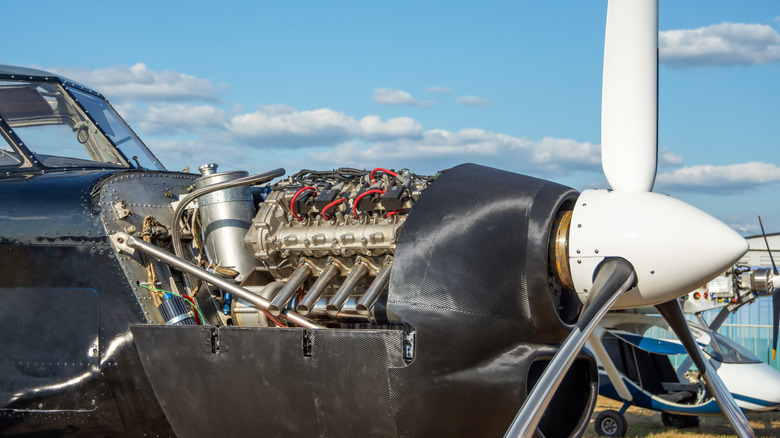Why Piston-Engine Aircraft Use 2 Spark Plugs Per Cylinder
The first recognizable internal combustion engine was developed by Nikolaus Otto in 1861. Since then, the gasoline-powered engine has evolved immensely. However, the principles that underlie how engines convert the energy stored in gasoline to mechanical energy have remained the same. In simple terms, gasoline and air are mixed in a cylinder, then ignited through the use of a spark plug, and that energy is used to drive a piston and power the vehicle. Most of us will be familiar with the vital role that the aforementioned spark plugs play in this process. We'll also be familiar with the more traditional layout of one spark plug per cylinder found in modern cars (although some high-performance cars may have two).
While a dual spark plug configuration is rare in cars, most aircraft piston engines like the famous Lycoming O-320 series, will have two spark plugs in each cylinder. There are sound reasons why this is, but one of the main ones is redundancy. A faulty spark plug is an inconvenience for a motorist, but in the worst-case scenario, a motorist can roll over to the side of the highway and curse their luck. Such an incident, when 10,000 feet in the air, is a different matter. This is why a mandatory part of the Code of Federal Regulations airworthiness standards states that an aircraft piston engine must have two spark plugs per cylinder, and two separate electrical circuits. However, this isn't the only reason piston-engined aircraft have twin spark plugs in each cylinder.
Redundancy and efficiency
Ultimately, the safety aspect of the engine is a major reason for having two spark plugs per cylinder. With this configuration, the failure of a single spark plug doesn't mean the cylinder is out of action. Although, its performance would be adversely affected. However, as bad as this situation is, it's nothing in comparison to the complete failure of an electrical circuit. With a single spark plug configuration, running on a single circuit, this could be catastrophic. Dual systems with two electrical circuits, with independent electrical sources, mean the loss of a complete circuit won't turn a plane into a glider.
The other reason that piston-engined planes use this configuration is for performance. In this context, twin spark plugs offer several main benefits, including higher power output and lower fuel consumption thanks to more efficient energy conversion. Additionally, dual spark plugs can lead to a cleaner combustion process, which potentially reduces unburned fuel and lowers emissions. Finally, this configuration results in a smoother and more balanced combustion process, which reduces uneven heating and causes less wear on engine components. This cleaner burn also reduces carbon buildup on spark plugs and valves, which improves reliability over time.
In short, having two spark plugs per cylinder means an aircraft is more reliable, burns fuel more evenly and cleanly, and produces more power. Points that are useful in any scenario, but when you're soaring through the air 10,000 feet above the earth, you'll be glad that the engine that is keeping you there has more than one spark plug per cylinder.

